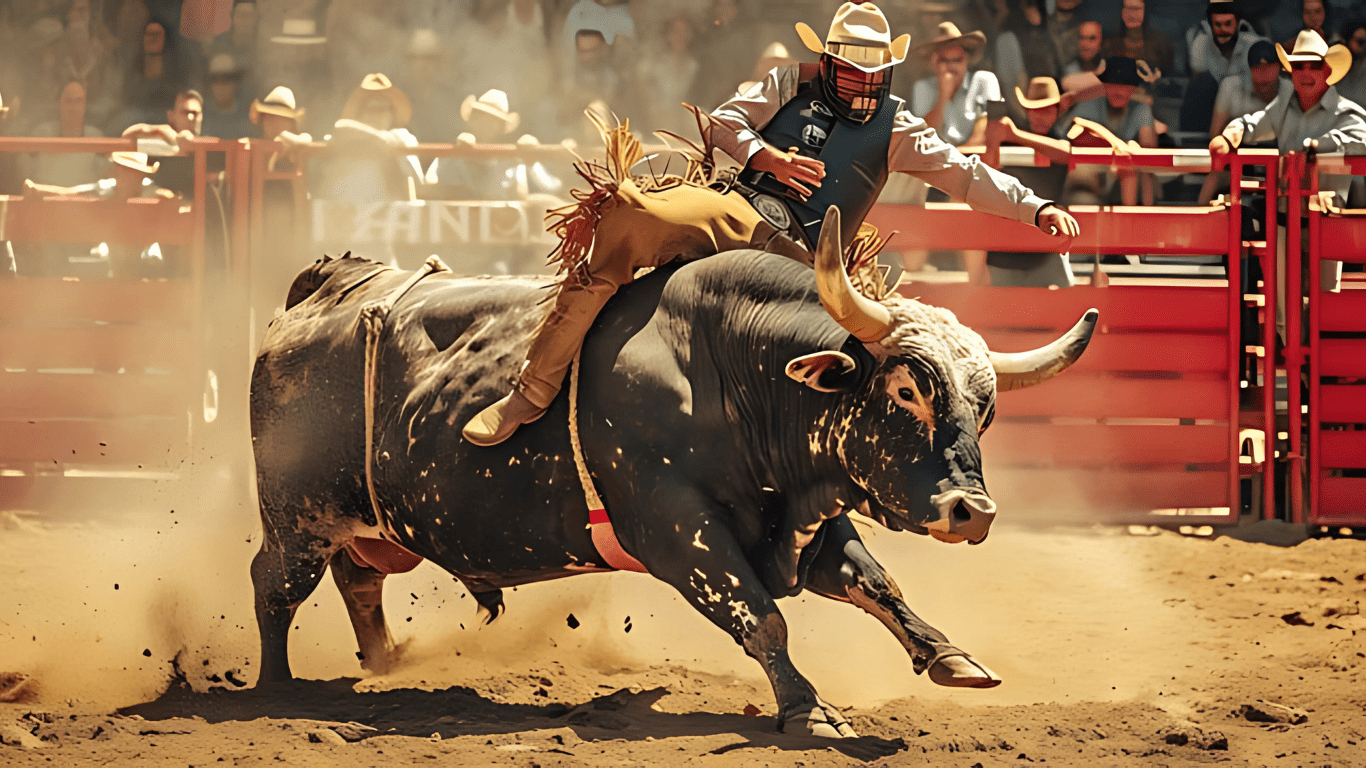Jaripeo is a colorful, traditional Mexican parade that reflects the strong agricultural roots and folk culture of Mexico. Seen as a sort of Mexican rodeo, jaripeo is part athletic competition and extreme sport, part performance art and cultural expression. It dates back to centuries when it was a ranching skill that has over the years turned into an entertainment sport. This article will take a closer look at where jaripeo comes from, its importance and why it is still in practice today as well pondering what does this trio mean culturally but also how problematic the use of bull under certain conditions.
Jaripeo: A Heritage From Humble Beginnings To Public Display
Jaripeo dates to the Colonial era in Mexico, when Spanish settlers first brought cattle ranching to the country during that 16th century. It was a tradition that grew out of showboating the skills to work livestock including bull handling & riding. In its original form, jaripeo was a way cowboys — or charros in Spanish — came together to show off their courage and skills with horses by riding bulls bareback and trying to stay on the bull without getting bucked.
Originally these were held on haciendas and ranches throughout the countryside, where working cowboys could show off their skills in front of one another as well as spectators. The sport eventually morphed from a private, ranch-based event to one for the public too come see. Jaripeo then spread throughout México and began to acquire regional variations, but the basic aspect of teh sport remained similar: a man up against a bull.
In the 19th century, jaripeos became more formal events that took place during local festivals and fairs, with a ring for charreada also formed at these occasions. As the informal ranch work transformed into a more formalized sportive competition, jaripeo was born and became integrated to Mexican popular culture as one of numerous traditions.
Jaripeo vs Charreada: What is the difference?
Distinct from Mexico’s other popular equestrian sport of charreada — a form of rodeo considered the country’s national sport by some — jaripeos vary greatly in construction and substance. Different rodeo events that mirror the skills used on a ranch, such as horse riding and roping of cattle are showcased in charreada. Similar in nature to the American rodeo, Mexican-style is mostly ceremonial with riders wearing traditional costumes that include the often embroidered charro suit.
Jaripeo, on the other hand, is all about bull riding. The primary skill celebrated in jaripeo focuses on the rider’s ability to stay mounted on an untrained or aggressive bull for at least eight seconds. Unlike the regimented and tradition-filled charreada, jaripeo embodies the wild side of the sport, where the challenge lies in enduring the bull’s unpredictable movements. Both events, however, remain deeply rooted in Mexico’s rural life and its rich history of cattle ranching, reflecting the resilience and bravery of those who participate.
Jaripeo: The Thrill of Bull Riding and the Art of Balance
Para jaripeo esto se agradece evidentemente mejor,to Have Length y el riesgo es también parte del number: async([],indx_Length,cnt_risk_publish,// secuencia…
Never miss the legendary bull-riding performance at jaripeo, where riders—jinetes—dare to take on some of the badest and most unpredictable bulls.
Unlike American rodeos, where bull riders use saddles and specialized gear, jaripeo riders cling to a mecate (rope or lasso) and rely on their own strength to maintain balance. They demonstrate impressive skill and control, holding on tightly as they face the challenge of the bull’s unpredictable movements.
Generally, the rider attempts to keep both an arm in the bulls horns and stay mounted on it for at least 8 seconds is recorded as a benchmark time.
Holding on is only half the battle; riders must balance and synchronize their movements with the bull’s bucking.
Both the aggressive bull and spring-loaded buck keep audiences on their feet, thwarting riders at every moment.
Bulls suitable for jaripeo are bred for strength and temperament, weighing 1,000 to 2,000 pounds, revealing inherent dangers.
As dangerous as jaripeo is, bull riding is praised for its challenge and the bravery it requires. Riders earn recognition as local champions, celebrated for their fearlessness and skill in controlling the bull. The sport tests both horse and rider, challenging their physical and mental strength. Many participants gain significant popularity within the community, with some achieving great success by excelling in jaripeo.
Cultural Impact: Jaripeo as A Sign of Mexicaness
Much more than just an outlet for athleticism and excitement, jaripeo carries a powerful connection to Mexico’s rich cultural history. It represents not just a game, but an expression of soul and strength, honoring generations of ranch heroes. The film explains that the tradition symbolizes Mexican culture, especially in regions where cattle ranching is significant.
This tradition incorporates music, dancing, and celebrations at jaripeo events, turning rodeos into festive cultural meeting points. Mariachi bands, along with groups like Banda and Norteño, play live music to infuse the fiesta with energy. Their vibrant performances enhance the atmosphere, encouraging spectators and participants to dance and celebrate the spirit of jaripeo. Festive music with trumpets, guitars, and drums enhances the bull riding spectacle, creating celebration and bringing everyone together.
For many jaripeo participants and spectators, the event connects them to their cultural heritage and reflects Mexico’s agrarian values. Passed down through generations, men riding for five or six years learned to hold on from their fathers and grandfathers.. In this way, the sport serves as a bridge through time, preserving one of Mexico’s most significant cultural histories.
How Jaripeo Became Horseplay And Influenced Western Sports
History and Evolution Although jaripeo is still based on its traditional roots, it has changed a lot over the years. Today, the sport is more commercialized; it has known to gather some of large audiences and attention from media. Jaripeos often take place in larger venues, such as arenas that can seat thousands of spectators. Some events even attract significant television coverage, reaching audiences beyond the local communities where they hold importance.
The legendary Mexican singer Vicente Fernández, known as El Rey de la Música Ranchera, significantly contributed to modernizing jaripeo. The iconic performer Fernández often performed at jaripeo events and featured the sport in his music, raising its profile. His combination concerts featuring jaripeo performances revitalized the tradition, attracting new audiences in Mexico and among Mexican-American communities abroad.
The modern dance form known as jaripeo baile popularizes traditional dances, showcasing Banda and Norteño music within Mexican American communities.
Jaripeo and Animal Welfare: Controversy and Morality
Although jaripeo is part of the culture, it has not always been free from criticism. Animal rights advocates argue that jaripeos are inhumane, claiming that bulls endure extreme stress for what they label as entertainment. Critics allege that organizers often rile or mistreat bulls to provoke aggressive behavior, raising significant concerns about animal welfare. They argue that such practices compromise the animals’ well-being and call for stricter regulations to protect them during events.
Some jaripeo supporters argue that the sport is a long-standing tradition, emphasizing that safeguards exist to protect its animals. Participants argue that the bulls used in jaripeo hold significant monetary value, prompting owners to care for them diligently. Since the bulls’ health directly impacts the event’s success, organizers ensure they receive proper nutrition and medical attention. The debate rages on, with some demanding tighter regulations or a ban, while others defend this cultural practice in Mexico.
The safety of riders is another source of controversy, as well animal welfare concerns. Like we mentioned earlier, jaripeo is a violent sport and there are usually serious injuries.
The danger adds excitement for spectators but ignites a debate about improving safety measures to protect both participants and bulls.
Conclusion: Jaripeo as Living Tradition
Jaripeo, like so many other rituals in Mexico and beyond is a variation of the allusive namesake: rodeos. It is a sport that exalts bravery, finesse and the deep historical connection between Mexico’s agrarian past and modern experience.
The blend of traditional and modern jaripeo contrasts sharply with the significant financial backing of major American sports leagues.
The untamed lands of jaripeo create a unique terrain that stands apart from any other equestrian discipline. This unique landscape challenges riders and elevates the excitement of the event, beautifully showcasing the raw and untamed environment.
It is a living tradition







